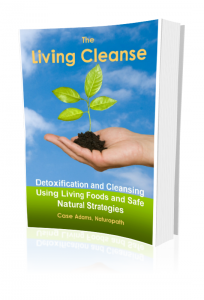Which Countries Ban GMO Crops or Require GE Food Labels?

Many countries have banned GMO crops or banned GMO labels.
A growing opposition to genetically modified foods – abbreviated as either GE foods or GMO foods – has been increasing in many countries. In others, not so much.
The Monsanto Corporation – the world’s largest purveyor of genetically modified food seeds – along with many large food producers, are combating growing worldwide opposition to genetically modified foods.
Over the years, Monsanto has developed a number of GMO seed patents, and have acquired companies that utilize natural cross-breeding methods. They now hold a commanding market share of the global seed supply. This is not just limiting biodiversity. It is upsetting many consumers, who fear a long-term threat to their health.
Contingency planning may become more vital to Monsanto as consumers and legislative efforts have continued to seek to either ban or limit the growing and distribution of genetically modified crops. Let’s take a look at some of these efforts around the world, along with those that have failed:
In this article
GMOs and the European Union
There are 28 European Union member countries. They have periodically come together and agreed on directives and regulations to maintain general requirements to control the proliferation of GMOs. Several directives and regulations have been approved towards this goal over the past few years. These have also been updated with amendments after being passed:
March 2001: Directive 2001/18/EC was designed to help control the release of GMOs into the environment – amended by Directive (EU) 2015/412. This governs the ability of Member States to restrict or prohibit the cultivation of GMOs in their territory.
March 2003: Regulation (EC) 1829/2003. This regulation was designed to help control the distribution of GMO foods and feedstuffs throughout the Member states.
September 2003: Regulation (EC) 1830/2003. This requires food producers to label foods with GMOs and identify which ingredients contain GMOs.
May 2009: Directive 2009/41/EC. This governs the requirements of producers to be transparent regarding GMOs when they are transported between countries.
These EU directives and regulations allow quite a bit of leeway for the Member states of the EU. As such, individual countries in the EU also have their own GMO policies. Below are a few of those, together with other policies around the world:
France
France has banned the growing of GM crops. As of May 16, 2012, France has re-instituted its ban on Monsanto’s MON810 GM corn from being grown in the country. A high court in France overturned a 2008 ban last year, but growing sentiment in France pushed the French minister of Agriculture to reinstate the ban this past May of 2012.
Germany
Germans have banned the growing of all GMO crops, except potatoes.
Switzerland
The Swiss banned the growing of all genetically modified crops, as of 2005, and this ban has been extended through at least 2013.
Madeira
The island country off of Portugal banned growing GMO crops in 2010.
Ireland
GMO crops have been banned from growing in Ireland, and Ireland has a voluntary GM food labeling system.
Austria, Greece, Hungary, Luxembourg and Bulgaria
These countries have banned GMO crops and have banned the sale of GM foods in their countries.
Mexico
As of October 2013, the Twelfth Federal District Court ordered the Mexican government to ban the planting of all genetically modified maize (corn), as well as halt all commercial pilot test plots. As to whether this will translate to a complete ban of GMOs in Mexico remains to be seen.
Japan
Japanese law bans the growing of any genetically modified seeds or crops in Japan. However, Japanese food manufacturers are actively importing “Roundup Ready” GMO canola grown in Canada primarily to manufacture canola oil. As a result, scientists have found that the GMO canola variety is now growing wild along roadsides and ports that have been the supply line for canola importation.
Australia
Australians have been successful in banning GMO crops from being grown in South Australia and in Tasmania.
New Zealand
Kiwis banned growing GMO food crops in the country due to concerns for the environment and the sustainability and diversity of food crops.
Venezuela
Venezuela’s 1999 Constitution Article 127 prevents patents of the genome of any living organism. Since then the country has been active in preventing the growing of GMO crops within the country. In 2014, the Venezuelan government passed legislation updating the Law on Seeds, Products for Animal Production and Biological Inputs. This revision has effectively banned the cultivation of genetically modified seeds within the country.
Brazil
Brazil is a big producer of GMOs but smaller growers have been pushing to ban GMOs. In 2012, a high court in Brazil ruled that Nestle – one of the largest brands in Brazil – must label any food with more than 1% genetically modified ingredients as a GMO – containing product. By virtue of the ruling, GMOs must be labeled in Brazil.
India
As a result of the disaster stemming from GMO cotton, in 2010, the government instituted a ban on GMO eggplant due to this tragedy and further information provided by scientists and agricultural experts. The Bt Brinjal variety was banned due to concerns of the seeds contaminating other self-sustaining crops. The Monsanto seeds are also “terminator” seeds, which require the farmer to purchase the seeds – at a price 1,000 times the price of a normal seed – each year from Monsanto. With natural seeds, farmers often produce their own seeds to plant the next year. This has hurt the productivity and economic viability of those growers who have used GMO seeds.
Costa Rica
In 2014, the Costa Rican Supreme Court declared that the process of approval for GMO projects was illegal. This sets up a more difficult process for new GMO projects, although current GMO projects are not in danger.
Thailand
After GMO papayas began to contaminate other cropland in field trials, Thailand has been working to reduce their use of GMO crops. Japan then banned the importation of Thailand papayas (as well as papayas from Hawaii – which are now predominantly genetically modified).
Georgia
In December of 2013, the nation of Georgia passed a law banning the importation of genetically modified seeds into the country without a specific license to do so. The country’s Environment Minister Khatuna Gogaladze stated:
“The purpose of the bill is to create a single state system of bio safety that will regulate the use of living genetically modified organisms.”
GMOs in the United States
In In the United States, over the past few years, several states have attempted to ban GMO crops or require labeling for GE foods but have faced stiff legal and political opposition. Most measures, such as in California, Oregon and Washington, were voted down after trade groups did full-court presses with threats of increased food prices.
On July 21, 2016, the U.S. Congress passed the the GMO labeling bill S.764. On July 28, President Obama signed the law. It will require that food producers label their products with a disclosure that ingredients contain genetically modified ingredients.
The caveat, however, is that the law gives the Agriculture Department two years to draft the rules, and define what foods have to be labeled as GMO. Many will apparently be exempted. The law also states that the GMO disclosures don’t have to be on the product label itself, but on the producer’s website, linked to a QR code on the product label. The QR code would require consumers to have a smart phone with an active internet connection in the store to know whether the food has GMO ingredients.
The law also over-rides a new Vermont law requiring GMO labeling, as well as a long-standing law limiting the use of GMO seeds in the state of Vermont.
Senator Barbara Box called the new U.S. law, “a sham and an embarrassment.”
The sudden scramble for a law arose after Vermont put in force a statewide GMO labeling act. In April of 2014 the Vermont State Legislative House passed GMO labeling act H.112 – requiring non-dairy and non-meat genetically-modified food products to be labeled. Vermont Governor Peter Shumlin signed the bill and on July 1, 2016, the first statewide GMO labeling law went into effect. The law was also defended successfully in court.
This unfolded the lobbying Congressional scramble to create a U.S. bill that would override state laws on GMOs – and the passage of the so-called DARK Act (Denying Americans the Right to Know).
Other U.S. states have attempted to enact GMO labeling laws.
California’s GMO-labeling initiative was barely defeated in 2012, and Washington State’s initiative in 2013 was also defeated. In February of 2014, California State Senator Noreen Evans (D-Santa Rosa) introduced Senate Bill 1381. This bill would require labeling for genetically engineered food ingredients exceeding 1% of content. Unlike California’s Proposition 37 defeated in 2012, this bill does not penalize unknowing participants in the form of farmers or retailers, and does not prohibit labeling a GMO-product as “natural.”
Meanwhile, some 28 initiatives sprang up in other states, after Connecticut passed the first statewide GMO-labeling law in the United States. That law, House Bill 6527, passed on June 3, 2013. The law dictated that all GMO foods sold in the state must be labeled as such, but only if four other states in the New England region – with an aggregate of at least 25 million residents – also passed GMO labeling laws.
“Two of the five trigger states had to border Connecticut or be New York and New Jersey,” according to a Release from Governor Dannel P. Malloy’s office.
Unfortunately, these statewide efforts are all moot now with the U.S. law of 2016.
A number of counties in the U.S. also passed anti-GMO legislation
Four counties in the California banned the planting of GMO crops: Trinity, Marin, Mendocino and Santa Cruz. In December of 2012, Washington’s San Juan county passed Measure 2012-4, which bans the growing of genetically modified crops in the county.
The law exempts research and health organizations in secured and controlled fields. The county council on the island (and county) of Kauai, Hawaii approved a GMO disclosure bill for the island (not a banning of GMOs), and this bill was signed into law by Mayor Bernard Carvalho on December 5, 2013.
However, in August of 2014 GMO companies (Dow, Syngenta, Dow and BASF) won a lawsuit in Hawaii U.S. District Court that blocked the GMO ordinance. Judge Barry Kurren stated that Hawaii’s state law did not support the ban.
On December 6, 2013, Billy Kenoi, Mayor of the “Big Island” of Hawaii (a county in the State of Hawaii) also signed into law a bill that would restrict GMOs from being grown on that island. While again not an outright ban, the “GMO” Bill 113 requires open air GMO cultivation to be registered with the county, and it exempts the cultivation of GMO papaya – exempting specifically: “Any person engaged in the open air cultivation, propagation, or development of genetically engineered papaya…” (Section 14 – Exemptions (2)).
In November of 2014, voters in the county of Maui approved a ban for growing genetic crops in the county. However, Monsanto immediately filed against the county in federal court and won, blocking the new GE growing ban.
On May 20, 2014, Jackson County Oregon voters passed a law banning the growing of genetically modified plants within the county. Neighboring Josephine County also passed a GMO ban, but this may be challenged in court because of Oregon’s 2013 bill 633 outlawing the ability of Oregon counties to regulate GMOs – or seeds and farming practices in general.
In May of 2014, a lawsuit was filed in Oregon in an attempt to overturn the Jackson County genetic engineering ban.
Yes, in some states, such as North Dakota, Iowa, Idaho, Indiana, Oklahoma, Arizona, Pennsylvania, Georgia, Oregon and West Virginia, state legislatures have passed or moved to pass laws banning localities such as cities and counties in their states from passing their own GMO-free laws such as the ones discussed above.
And the U.S. House of Representatives have attempted to nullify the states’ rights to require GMO labeling with the King Amendment of the 2013 farm bill. While the King Amendment has been dropped, the attempts to nullify states’ rights to require GMOs continues.
The U.S. GMO-free battle rages on.
Organizations in the U.S. work to require labeling
Several organizations have banded together on two fronts to file petitions requiring the labeling of genetically-modified foods.
The Center for Food Safety announced that they have, together with several environmental, farming and health organizations, filed a legal petition with the U.S. Food and Drug Administration (FDA) that demanded the agency require food produced through genetic engineering be labeled. They are now seeking help in signing a petition to regulate GMOs.
This falls on the heels of a new voter initiative that was begun by a group called LabelGMOs, along with other health organizations such as the Organic Consumers Association, to continue the push to require GMO food labeling.
A genetically modified food is one where the genes have been manipulated to change the nature of the plant. A multitude of genetic manipulations have been done in order to make the plant able to resist the spraying of more herbicides or pesticides onto the plant. This herbicide/pesticide-resistant plant can sustain more chemicals, producing more chemical residues on the food. “Bt-Corn,” for example, allows growers to spray more Bt pesticide onto the plant without the plant dying. “Roundup-Ready soybeans” allow for more roundup to be sprayed onto soy crops.
Most genetic modification also prevents the plant from germinating, requiring growers to buy their seeds from the GM seed companies, instead of being able to propagate their own seeds from plants. This has become a devastating problem in India, where most growers have traditionally produced their own seeds.
GM proponents claim that GM seeds increase crop yields – and some studies have indeed shown yield increases. Yet several studies have also shown little or no yield increases. For example, a 1999 study headed by Dr. Charles Benbrook of the Organic Center, reviewed 8,200 university trials during the 1998 growing season. Roundup ready soybeans yielded an average of 5.3% less than other soybeans among all varieties. The study also found that growers using Roundup ready soybeans used from two to five times more herbicides onto their crops.
More recently, in 2009, the Union of Concerned Scientists concluded in an extensive study of GM crops that:
“1. Genetic engineering has not increased intrinsic yield.
2. Genetic engineering has delivered only minimal gains in operational yield.
3. Most yield gains are attributable to non-genetic engineering approaches.
4. Experimental high-yield genetically engineered crops have not succeeded.”
Consuming genetically modified foods has been the subject of several animal studies, some that have caused concern (Smith 2003). Human and epidemiological studies have been preliminary, and have not provided conclusive evidence of harm, however. Most experts agree that the jury is still out on whether GM foods – or which ones – could be harmful to our health.
This raises the concern for many consumers, who do not want to be test subjects for GM foods. Many foods containing soy, corn and others on grocery shelves are now genetically modified – especially among conventional food brands. Most consumers cannot tell which foods are made with genetically modified ingredients, although organic food producers avoid all genetically modified ingredients.
Legislation seems to be headed towards more GM labeling requirements. This past May, California passed AB88, a bill that required labeling of genetically-modified fish. The bill was authored by Assemblyman Jared Huffman, and responded to the FDA’s review of approval for genetically modified salmon. This bill was co-sponsored by the Center for Food Safety.
Consumers increasingly resistant to buying GMO foods
U.S. consumers will still seek ways to avoid buying GMOs. The Non-GMO Project that verifies no GMO ingredients has continued to grow, with more than 15,000 food products now non-GMO verified.
A late 2015 poll by The Mellman Group confirmed previous polls finding that most Americans support GMO labeling. The pool found that 77 percent of respondents were strongly in favor or labeling GMOs.
Other consumer polls have shown that between 85% and 96% of consumers would like to see mandatory labels for GMO foods. A 2011 MSNBC poll of over 45,000 people (continuing over the internet) found that 96% answered: “Yes. It’s an ethical issue – consumers should be informed so they can make a choice.”
Yet GMO seed manufacturers are fighting tooth and nail against the public every bit of the way. Along with the lawsuits among multiple counties that have opted for a ban, the GMO companies have attempted to sue multiple states about their anti-GMO legislation.
Label requirements for GMOs have proved lethal to GM crops and GM seed suppliers in those countries that require labeling. And more than 40 countries from around the world now either require GE foods to be labeled or have instituted voluntary labeling laws.
These labeling laws, mostly among first-world countries, have occurred primarily out of concern that genetically engineered foods – or the potential of its increased pesticide content – may prove to have negative health consequences. Others are concerned by the prospect of genetically altering our food supply without a clear understanding of the long-term consequences.
And research shows that genetically-modified food sales decrease with labeling laws.
Then there are countries that embrace growing GE foots
While much of the world’s educated consumers are pushing for either banning GMO crops or at least requiring GMO labeling, many of the world’s largest growing regions still embrace growing GMO crops. Here are the countries that are currently promoting genetically modified crops of some sort:
United Kingdom
The UK government officially approved growing GM crops, even though the monarchy has raised questions about it.
Spain
The Spanish government allows GMO corn, and about a fifth of the corn grown in the country is GMO.
Philippines
The Philippines Islands have allowed the growing of GMO crops without restriction.
China
China has embraced genetically modified crops and seed production, and is one of the world’s largest producers of GMO products.
Canada
The government of Canada has embraced GMO crops and seed production. GMO crops of soybeans, corn and canola have been on the increase throughout Canada.
South Africa
The government of South Africa has embraced GMO crops and plantings of genetically modified seeds have been increasing.
Germany
While the public is outspoken against GMO crops, Germany has approved GMO potatoes as mentioned above.
Czech Republic
Has approved GMO crops including potatoes.
United States
The 2016 U.S. law plus the entry of Monsanto executives into the FDA and USDA illustrate that the U.S. government has fully embraced Monsanto and other GMO seed producers and patent holders. The revolving door between the Monsanto Corporation and the FDA has been revealed over recent years. Monsanto also presents a commanding lobbying force in the U.S. Congress.
In the U.S., some 90% of acres planted are now from genetically modified seeds. And genetically modified fish are now permitted to be farmed in the U.S.
The European Union
The EU has no current restrictions for GMO crops to be grown, yet EU countries can still opt out of allowing crops. EU countries are not allowed to restrict the sale of GMO foods within their borders.
South America countries
Practically every South American country has approved or allows GMO crops, including Brazil, Argentina and Peru. Venezuela is the exception as mentioned above, and Costa Rica, due to extreme pressure from its consumers, is showing signs that it may soon reject GMO.
India
Until recently there have been no restrictions on growing GMO crops in India. As mentioned above, Indian activists are pushing for restrictions on GMO crops. India’s cotton farmers experienced a disaster with their 2007-08 crop of cotton when they used Monsanto’s GM cotton seed. Over 125,000 Indian farmers committed suicide because their crops were so bad that they lost their farm and homes to banks.
Zambia
The African country of Zambia has embraced GMO crop production and is now promoting the use of GMO seeds.
Will our future be a genetically modified world?
Just consider a planet where nearly all the crops grown will not produce seeds. What will such a world look like? It will be a world where our ecology and environment will be drastically changed. It will be a world dominated by the Monsanto Corporation.
Why? Because most of their GM seeds have been modified to – among other things – not produce plantable seeds. This is also called a terminator seed.
This means that farmers will have to rely upon one supplier – the owner of the patented seed to supply them with their seeds: Monsanto. Monsanto’s strategy is working. As their GM seeds have been proliferating in many parts of the world, Monsanto’s sales have been growing due to its success with Bt corn and other crops.
Currently two-thirds of Monsanto’s sales are from seeds, and their seed business and profits have been growing at a clip of 10% or more per year. Can we stop it? There is only one way to stop the coming devastation of our natural crops by Monsanto and their GM competitors such as DuPont:
We can choose not to buy GMOs
Monsanto’s recent acquisition of Seminis, which included several divisions that develop non-GMO hybrids, is proof that Monsanto can learn to become successful without spreading the world with genetically modified seeds that will change our food and crop landscape forever.
The Seminis company owns the rights to the lettuce hybrid called Frescada. Frescada was originally developed as a natural hybrid between romaine lettuce and iceberg lettuce. It is crisper than romaine, and more nutritious than iceberg. And it is now being sold in many stores.
The natural crossbred variety was originally developed by Petoseed, a small seed breeder from the Central California region. The variety does indeed produce its own seeds if grown for seed, and it does not contaminate other crops. There is a critical difference between genetic modification and natural crossbreeding techniques. Cross breeding comes from two species being joined together during their growing stages, resulting in a natural hybridization.
This is a natural event that also occurs in nature. Humans have been crossbreeding for thousands of years. Genetic modification is done in a laboratory. DNA from one species is spliced into another species’ genes, typically utilizing a virus as a carrier for the gene splice. This creates, in effect, a mutation within the target species – creating a genetic modification that multiplies with cellular division.
As this mutant begins to reproduce, seeds are produced. Any type of DNA can theoretically be used to create such a modification. And such a modification can also yield viral growth, possibly affecting the outcome of the resulting ‘patented’ species.
Instead of demonizing companies, they can be encouraged to change. Change is easily made by each of us, by voting with our wallets. With a little research, we can find out which foods and which brands utilize GM crop ingredients.
Most of the conventional corn and conventional soy being grown in the U.S. and around the world is now GMO. As such, choosing to buy organic corn and organic soy products – or avoiding them altogether – will reduce demand for a majority of the GMO crops currently being grown.
As sales of cereals and other products containing conventional corn and soy decrease, companies like General Mills and Kellogg’s will begin offering organic corn and soy or non-GMO corn or soy. Both companies have already acquired organic brands, so the change is beginning.
As consumers purchase more of these non-GMO products, demand among farmers will decrease, driving the price of GMO crops down. GM farmers will then begin to switch their crops to non-GMO crops. We must take responsibility for our corporations. They do not control us. Consumers control them.
Tobacco corporations, for example, became successful because smoking became popular among consumers. Yes, maybe they didn’t tell us we’d get cancer and they helped persuade us to smoke with smart advertising, but then again many of us knew that smoking gave us cancer and kept on smoking anyway. This has kept the tobacco companies in business.
Monsanto’s GM strategy has been the result of the acceptance – knowingly or not – of its technology by consumers. Now only consumers can change this. Yes, we can get some laws changed and require labeling – and that is good. But only consumers can decide not to buy GM foods.
And GM food is easy to avoid because organic foods are not allowed to include GMO ingredients.
In addition, new compliance labeling by the Non-GMO Verification Project is being introduced on more and more labels, and Whole Foods has announced it will require all brands in their stores to be labeled Non-GMO by 2018.
Increasingly, consumers, retailers, action groups and brands are taking action again GMOs. Corporate change often comes from these mechanisms, because in the end, its the consumers who pay the salaries of corporate executives.
Other Helpful links:
Organic Trade Association postion on GMO labeling.
Cummins R. Monsanto National: Taking Down Goliath. Organic Consumer’s Union. Accessed May 1, 2018.


















